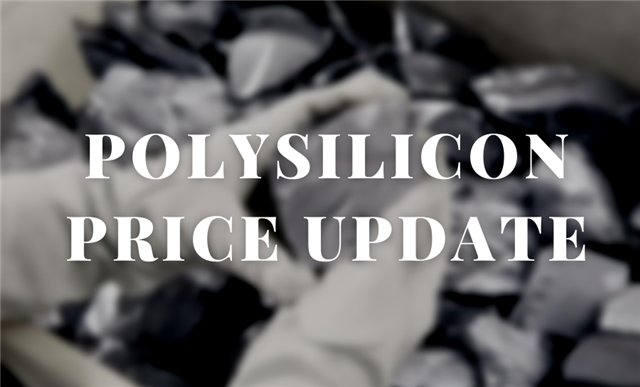The prices of polysilicon remain the same with the prices from last week after 16 weeks of price hikes since the start of this year, according to the prices updated by the Silicon Branch of China Nonferrous Metals Industry Association on Wednesday.

The main reason behind the stabilized prices, according to the Silicon Branch, is that a majority of enterprises have not signed new orders this week, as most of the orders for May have already been signed last week. Only a few enterprises have signed a small amount of orders in last week’s prices.
However, polysilicon is still in short supply despite of the fact that the prices have stopped increasing. Polysilicon manufacturers in China, both veterans and newcomers, have been affected by the lockdown to fight the COVID-19 pandemic. The production capacity expansion is slow and fall short of the addition of demands.
Because of the short supply of polysilicon, some wafer manufacturers have difficulty improving their output, and even leading wafer makers might have to lower their operating rate.
The prices of polysilicon are expected to remain stable till the end of May as most of the orders have already been signed and polysilicon manufacturers have no inventory.
At the end of May and the start of June, polysilicon makers will begin signing long-term orders for June. The prices will be determined by the supply and demand situation of polysilicon in June.
The total supply is predicted to match the total demand. About 73,000 MT of polysilicon is expected to be offered with 66,000 MT manufactured domestically and 7,000 MT imported. The demand is also estimated to be around 73,000 MT.
Despite the predicted balance between supply and demand, the distribution of polysilicon among different wafer makers could be uneven, resulting in the tight supply of polysilicon for some enterprises.
Therefore, it is predicted that polysilicon prices are likely to go slightly up by the end of June.
Wafer prices, as Solarbe has learned from wafer manufacturers, may remain stable. Non-vertically integrated wafer manufacturers may choose to keep prices the same or raise the prices slightly to maintain the market share of their wafers. The cost pressures have therefore not been transmitted to downstream enterprises. As a result, the profit margin for cell makers has improved.


